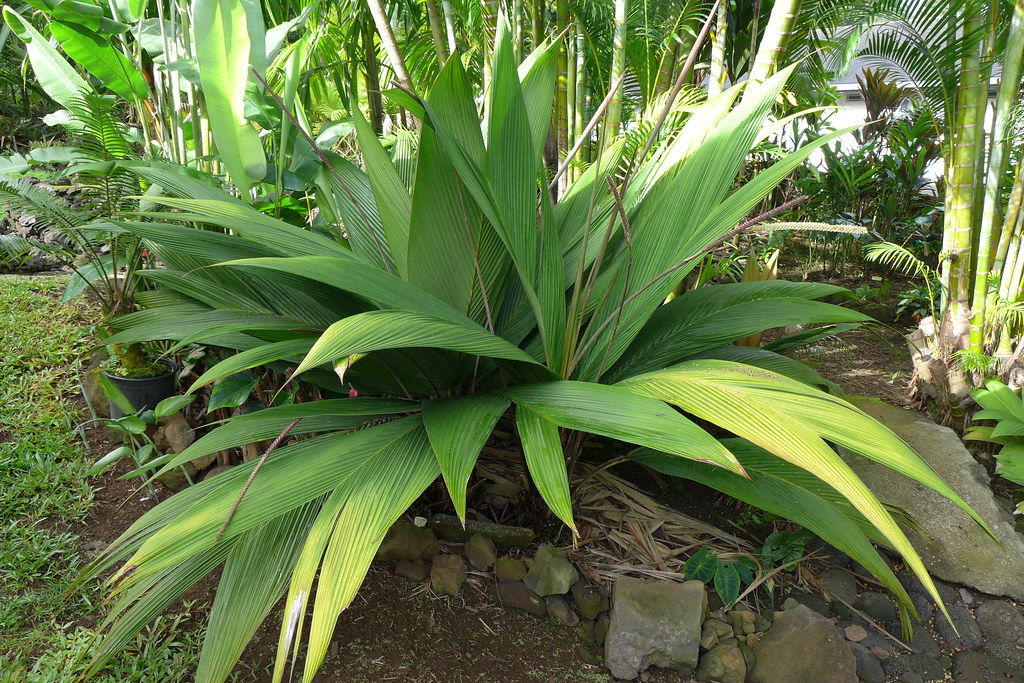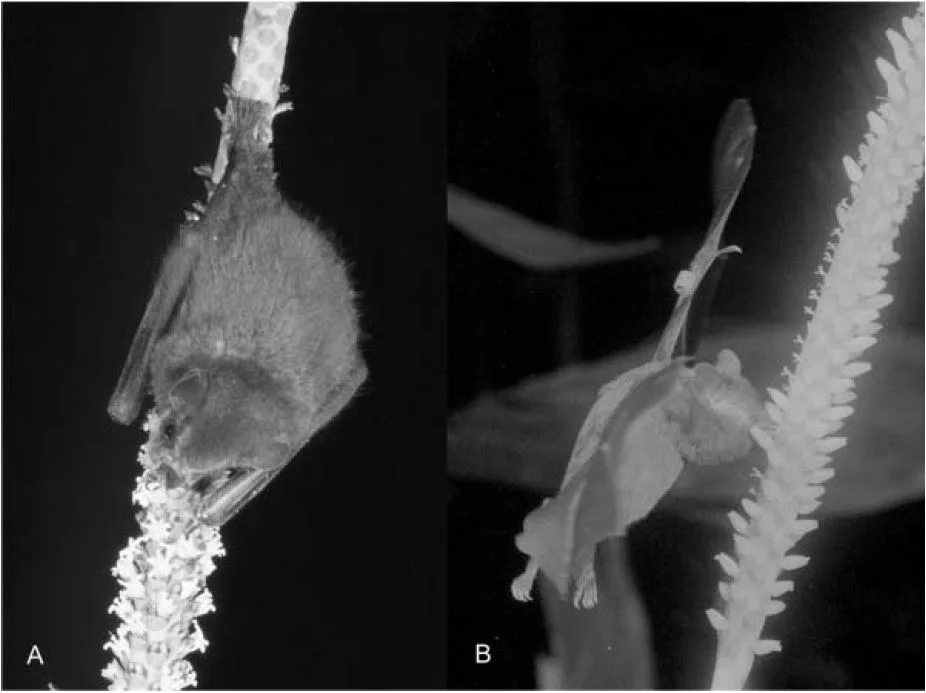Photo by Dr. Scott Zona licensed under CC BY-NC 2.0
I would like to introduce you to the coligallo palm (Calyptrogyne ghiesbreghtiana). The coligallo palm is a modest palm, living out its life in the understory of wet, tropical forests from Mexico to Panama. To the casual observer, this species doesn’t present much of anything that would seem out of the ordinary. That is, until it flowers. Its spike-like inflorescence is covered in fleshy white flowers that smell of garlic and as far as we know, the coligallo palm is the only palm that requires bats for pollination.
Flowering for this palm occurs year round. At first glance, the inflorescence doesn’t appear out of the ordinary but that is where close observation comes in handy. The more scrutiny they are given, the more strange they appear. As mentioned, the flowers are bright white in color and they smell strongly of garlic. Also, they are protandrous, meaning the male flowers are produced before the female flowers.
Photo by Dr. Scott Zona licensed under CC BY-NC 2.0
After the male flowers have shed their pollen, there is a period of a few days in which no flowers are produced. Then, after 3 to 4 nights of no flowers, female flowers emerge, ready to receive pollen. Each flower only opens at night and does not last for more than a single evening. Protandry is an excellent strategy to avoid self-pollination. By separating male and female flowers in time, each plant can assure that its own pollen will not be deposited back onto its own stigmas. The fact that the coligallo palm flowers year-round means that there is always a receptive plant somewhere in the forest.
The oddities do not end there. Both male and female flowers are covered in a fleshy tube that must be removed for pollination to occur successfully. Removal of the tube is what actually exposes the reproductive organs and allows pollen transfer to occur. Often times, the flowers of the coligallo palm are dined upon by katydids and other insect herbivores. This does not result in pollination as they completely destroy the flower as they eat. Considering the success of this plant across its range, it stands to reason that something else must provide ample pollination services.
Two species of bat visiting coligallo palm inflorescences: A) A perching Artibeus bat feeding on male flowers and B) a hovering Glossophaga bat feeding on female flowers.
As it turns out, bats are that pollinator. The job of pollination is not accomplished by a single species of bat either. A few species have been observed visiting the inflorescences. Apparently the bright color and strong odor of the flowers acts as a calling card for flower-feeding bats throughout these forests. Interestingly, the feeding mechanism of each species of bat differs as well. Some bats hover at the inflorescence like hummingbirds, chewing off the fleshy tube from individual flowers as they go. Other bats prefer to perch on the inflorescence itself, crawling all over it as they eat. These different feeding behaviors actually result in different levels of pollination. Though both forms do result in seed set, perching bats appear to be the most effective pollinators of the coligallo palm.
The reason for this is due to the fact that perching bats not only spend more time on the inflorescence, their bodies come into contact with far more flowers as they feed. Hovering bats, on the other hand, only manage to contact a few flowers with their snout at a time. So, despite the variety of bats recorded visiting coligallo palms, the perching bats appear to provide the best pollination services.
A coligallo palm infructescence showing signs of ample pollination. Photo by Dick Culbert licensed under CC BY 2.0
The role of perching bats in the ecology of this palm species does not end with pollination either. It turns out, they also play a crucial role in the dispersal of certain mites that live on the palm flowers. Flower mites live on plants and consume tiny amounts of pollen and nectar. As you can imagine, their small size makes it incredibly difficult for them to find new feeding grounds. This is where perching bats come into play.
It was discovered that besides pollen, perching bats also carried considerable loads of flower mites in their fur. The mites crawl onto the bat as they visit one inflorescence and climb off when they visit another. This is called phoresy. The bats are not harmed by these hitchhikers but are essential to the mite lifecycle. Thanks to their bat transports, the mites are able to make it to new feeding grounds far away from their original location. Though little is known about these mites, it has been suggested that the mites living on the coligallo palm are unique to that species and probably feed on no other plants.
Photo Credits: [1] [2] [3] [4]





